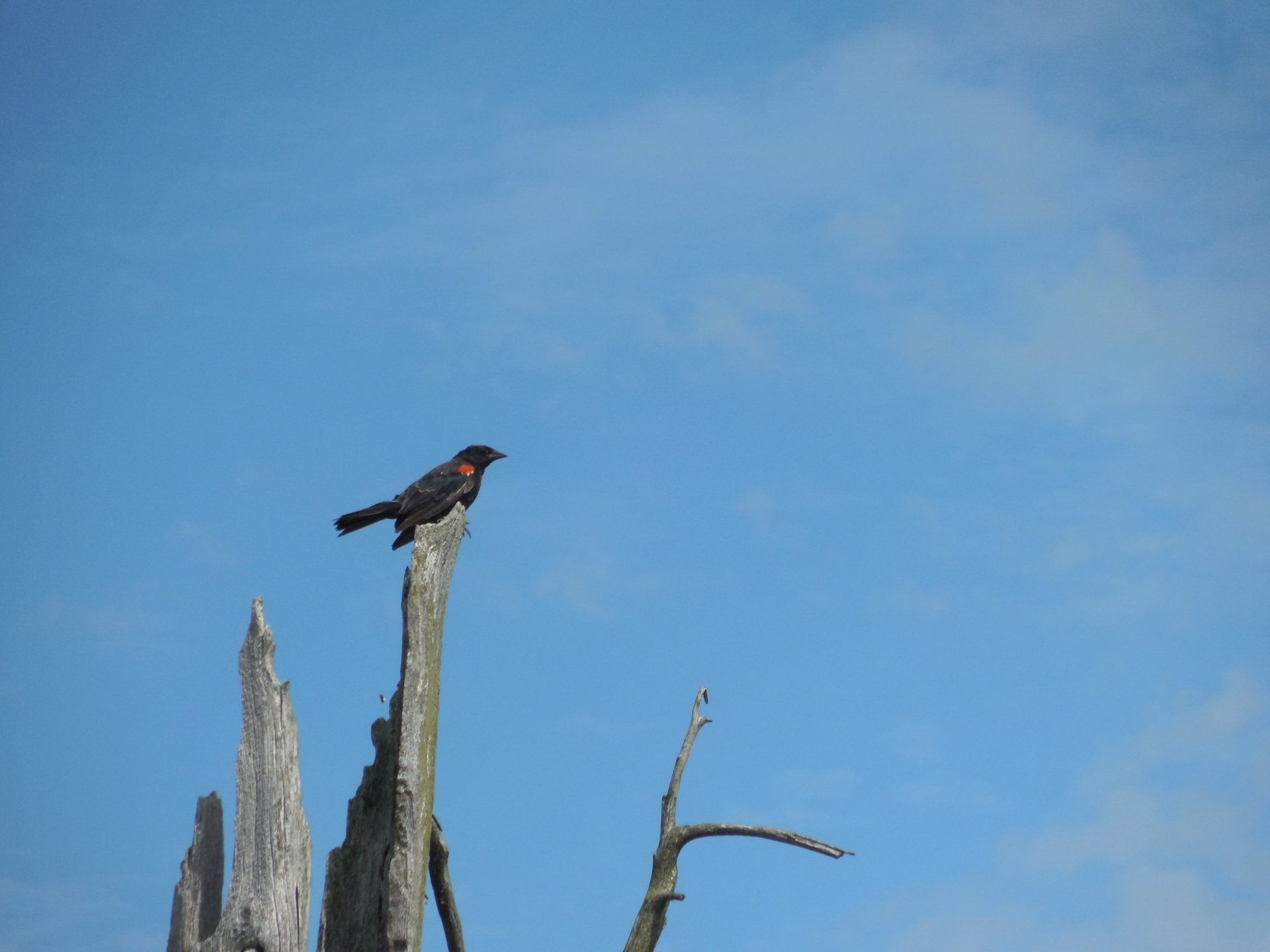Light and Bird Migration

Blog vol 2. 44. Light and Bird Migration.
Two weeks back I discussed research into use of green lights to help with fishing. This time of year, in the Northern hemisphere we are beginning to enjoy the return of our feathered friends from the south.
As I look outside and see sleet and snow falling, I also see our first American robins. What are they doing here in this cold, miserable weather? Maybe their travel agent should have looked into weather maps and northern conditions before they flew up here.
Bird migration is not motivated by weather, but by light, daylight.
Research has shown that the main cue for migration is the changes in the length of day. As we pass the vernal equinox (the day in spring when there is an equal amount of light and dark), we start to have more daylight than night. This shift in light causes the birds to undergo hormonal changes that make them more restless and prepares them for the long trip.
In the Hamilton area, the first birds start returning in January(!), some owls and about thirty different waterfowl.
In February, the red-winged blackbirds, a few robins and grackles, along with ducks and geese.
Now in March, we begin to see eastern phoebes, tree swallows, and lots of robins.
The peak is Mid-May with the arrival of the warblers and flycatchers and the orioles. Spring is a great time to be a birder, at home, or in parks and migration hot spots.
Light triggers the migration journey, but light can also be a problem. Most birds travel at night when there are fewer predators, fairer winds, and cool damp air to reduce water loss. But man-made lights, especially in the red and white colour temperatures, are distracting to them. Disoriented birds can actually fly into buildings, crash-land onto hard surfaces, or hit communication towers.
Being drawn to cities by the light, migrators are having stopovers in environs that are far from optimal for cover and food, and are lengthening their time of migration which can have devastating effects. To fix this pressing problem: dim the lights, turn them off, or change the light colour to less-distracting green or blue.
Light, daylight, the ongoing shift of the earth relative to the sun, puts many things in motion; birds, vast numbers of such variety in shape, size, colour, and habits; birds, “wonder”ful, endlessly interesting, and so hopeful...
Spring.
Enjoying the return of our fine feathered friends,
Til next week,
the good doctor, Dr. Mark Germain, Burlington optometrist






